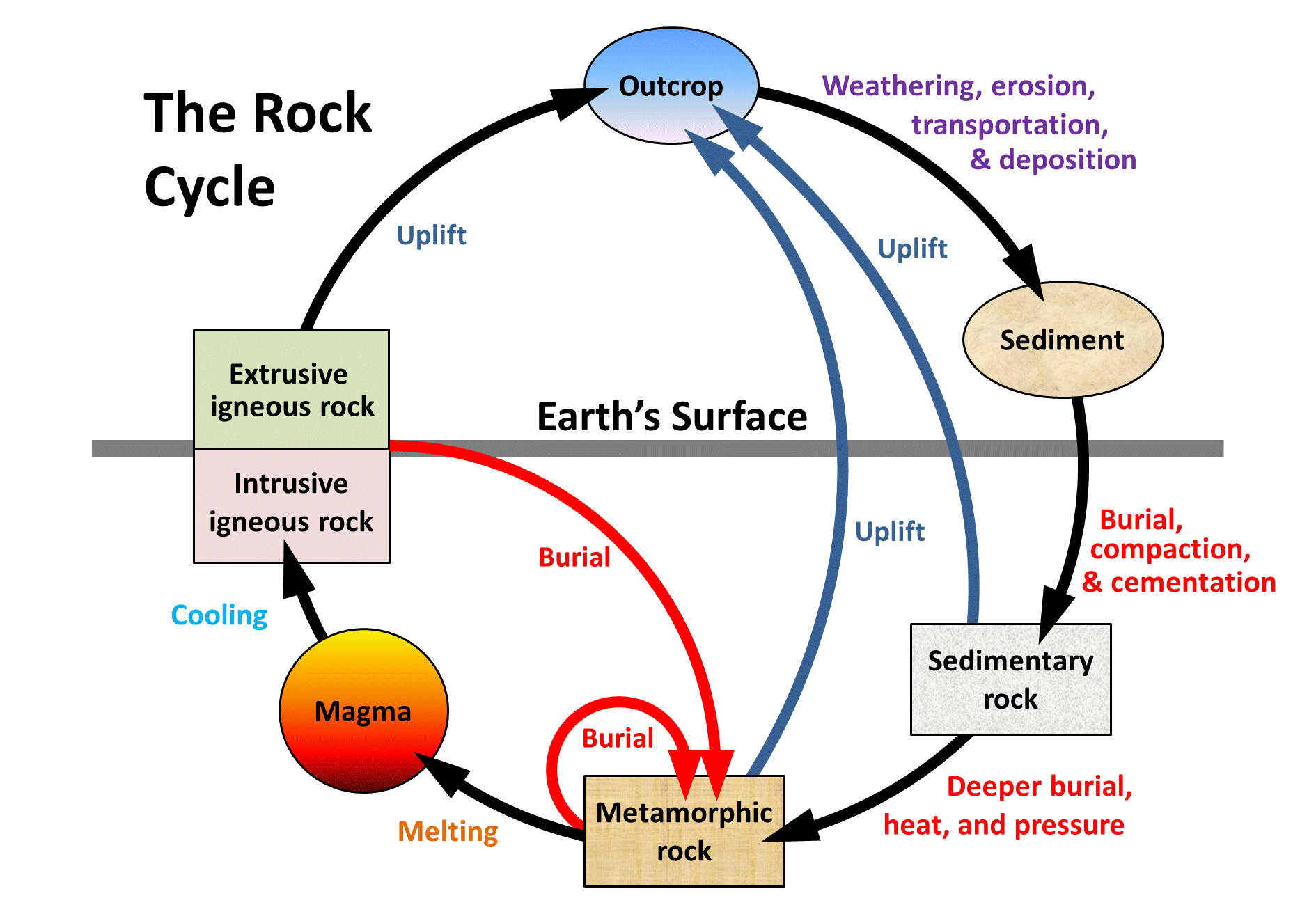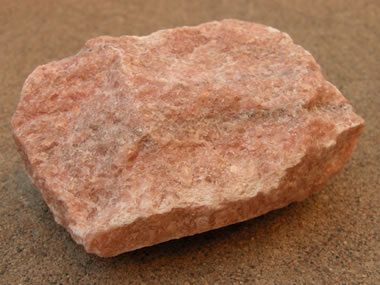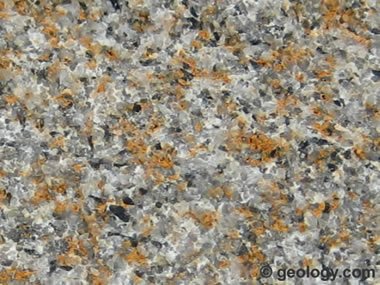Rocks
What are rocks?
Rocks are solid materials which mostly occur naturally. These are minerals that are non-living substances Minerals are like concrete building blocks. It's also possible to form certain rocks from just one mineral. Others are formed by more than two or more minerals that are combined Minerals appear like fragments of various sizes, or particles, some minerals may also be powdery in rocks too. Many rocks have very small minerals, giving the rock a smooth and even texture. Other rocks have a lager mineral grain which gives it a rougher texture. There are three different types of rocks called igneous, metamorphic and sedimentary rocks.
Igneous rocks:
Igneous rocks are formed from magma. The magma is forced up and some time out of the earth crust. When the magma cools crystals begin to form and the magma solidifies. Depending on how fast the magma cools will vairy for how big the crystals are. Eg; Basalt is formed from lava which contains small crystals because it cools fast on the surface, this makes the rock an extrusive igneous rock because it is outside of the volcano. Whereas granite has large crystals as it is formed by slow cooling inside the volcano making it an intrusive igneous rock.
Extrusive- Outside or exiting.
Intrusive- Inside something.
Metamorphic rocks:
When sedimentary rocks become buried deep in the earth's crust they are subjected to high temperatures and pressure. Over millions of years, this causes structural and chemical changes which form metamorphic rocks. Great pressure and weight of the rock above causes crystals to form in parrel planes or band. Metamorphic rocks are usually more resistant to erosion than sedimentary rocks. Eg; Shale is changed into the metamorphic rock slate and chalk to marble or sandstone to quartzite.
Sedimentary rocks:
Sedimentary rocks are formed from grains of eroded rocks or undecomposed parts of animals or plants. These sediments settle in layers usually underwater. Once the layers build they get old and become buried under newer layers, the more layers the heavier and the weight squeezes out water.
The particle of them ends up cementing together. This process takes you to millions of years. Eg; mud is compressed into shale and shellfish into limestone, or sand into sandstone.
eroded-Graduly wore away by natural agents.
undecomposed- Not left to spoil.

Rock cycle

Rocks we had to know
- Pumice
- Basalt
- Granite
- Obsidian
- Conglomerate
- Limestone
- Mudstone
- Marble
- Quartz
- Slate
- Schist
- Gneiss
- Sandstone
Pumice-Igneous
What is pumice?Pumice is a light coloured extrusive igneous rock that has a lot of tiny holes in it that forms in a volcanic eruption. The holes are formed because the rock its self has a lot of gas in it. Many specimens have a high enough porosity that they can float on water until they slowly become waterlogged.
How does the pumice form?
The pore spaces in the pumice are vesicles. The vesicles are gas bubbles that were trapped in the rock when cooled at a fast pace. As the gas bubbles escape the lava becomes frothy. The pumice cools and formes so fast that the atoms in the melt don't have time to aline themselves into a crystalline structure.
What can you use pumice for?
You can use pumice for lightweight concrete blocks and other lightweight products. Lava soap, that you wash your hands with the little tiny bits of pumice, Sandal feet, you use sandal feet to wash your feet and get rid of the dead skin.
Where can you find pumice in New Zealand?
You can find pumice nearly anywhere around the coastline of New Zealand because it can float and can get taken around but the water. The main spot that you can find in is I the central North Island. The beaches of Lake Taupō have pumice sand and in Waikato and Bay of Plenty, there was 173000 pumice found in 2003.


Marble-Metamorphic
What is marble?Marble is a metamorphic rock that forms when limestone is under heat and pressure of metamorphism.
How does marble form?
Marble forms at convergent plate boundaries where large areas of Earth's crust are exposed to regional metamorphism. Some marble can also form by contact metamorphism when a hot magma body heats adjacent limestone or dolostone.Dolostone-Dolomite, also known as "dolostone" and "dolomite rock," is a sedimentary rock composed primarily of the mineral dolomite


Sandstone-Sedimentary
What is sandstone?
Sandstone is a sedimentary rock composed of sand-size grains of mineral rocks or organic rocks. It also has a cementing material that combines the sand together. Sandstone is one of the most commonly found sedimentary rock. It is often mined and used for construction material.
What is sand?
Sand is a granular material composed of finely divided rock and mineral particles. It is defined by size, being finer than gravel and coarser than silt. Sand can also refer to a textural class of soil or soil type.

No comments:
Post a Comment
Note: only a member of this blog may post a comment.